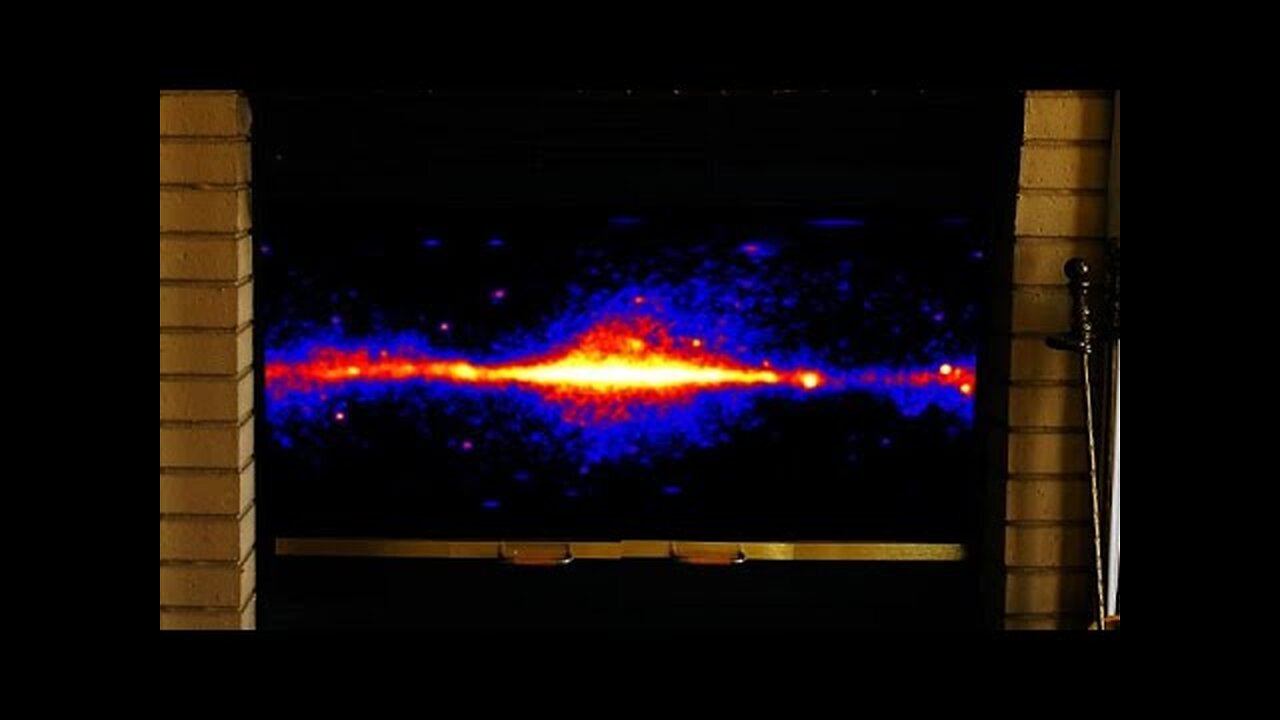Premium Only Content

Crackling Fermi Fireplace
Although it looks a little like a crackling fire, this is actually a 14-year time-lapse of the Fermi Gamma-ray Space Telescope’s observations. To learn more about the Fermi gamma-ray data you’re seeing, watch this video:
• Narrated Tour of Fermi's 14-Year Gamm...
The entire gamma-ray sky is unwrapped into a rectangular map, with the center of our Milky Way galaxy located in the middle, in this 14-year time-lapse of the gamma-ray sky. A moving source, our Sun, can be seen following a curving path through the sky, a reflection of Earth’s annual orbital motion. Watch for strong flares that occasionally brighten the Sun. The central plane of our galaxy is on full display, glowing in gamma rays produced when accelerated particles (cosmic rays) interact with interstellar gas and starlight. Pulsars and supernova remnants, all bright gamma-ray sources for Fermi, also fleck the Milky Way band. Above and below the bright central plane, where our view of the broader cosmos becomes clearer, splotches of color brighten and fade. These sources are jets of particles moving at nearly the speed of light driven by supermassive black holes in distant galaxies. The jets happen to point almost directly toward Earth, which enhances their brightness and variability. Over a few days, these galaxies can erupt to become some of the brightest objects in the gamma-ray sky and then fade to obscurity. In these maps, brighter colors indicate more intense gamma-ray sources detected by Fermi’s Large Area Telescope from Aug. 10, 2008, to Aug. 2, 2022.
Credit: NASA’s Goddard Space Flight Center and NASA/DOE/LAT Collaboration
Producer: Scott Wiessinger (Rothe Ares Joint Venture)
Science writer: Francis Reddy (University of Maryland College Park)
Visualizer: Seth Digel (SLAC National Accelerator Laboratory)
Scientist: Judith Racusin (NASA/GSFC)
-
 LIVE
LIVE
Ben Shapiro
51 minutes agoEp. 2214 - Ben Shapiro Show
1,517 watching -
 LIVE
LIVE
The Charlie Kirk Show
1 hour agoIntersectionality Explains It All + Mayhem in LA + Rand vs. the BBB | d'Almeida, Cabassa, Sen. Paul
4,380 watching -
 LIVE
LIVE
Simply Bitcoin
1 hour agoBillionaire FORCES Jordan Peterson To See The $400T Bitcoin Black Hole | EP 1263
1,194 watching -
 1:04:40
1:04:40
Timcast
1 hour agoDEAD BODY Found Amid MASS LOOTING As LA Riots Spread Nationwide
40.2K99 -
 2:03:09
2:03:09
Steven Crowder
4 hours ago🔴 LA on the Brink: Riots Push Trump to Edge of Invoking Insurrection
207K174 -
 LIVE
LIVE
The Dana Show with Dana Loesch
1 hour agoWATCH: The Dana Show LIVE on Rumble! 06-10-25
713 watching -
 31:35
31:35
The Mel K Show
2 hours agoMORNINGS WITH MEL K - The Globalist Funded US Color Revolution Exposed-Will American Citizens Wake Up to the Massive Fraud Before it’s too Late? 6/10/25
5.61K5 -

Rebel News
59 minutes ago$93M ArriveCan disaster, Poilievre backs CAF spending, Clueless immigration minister | Rebel Roundup
1 -
 LIVE
LIVE
TheAlecLaceShow
2 hours agoGuests: Secretary Doug Collins & Navy SEAL David Rutherford | LA Riots Day 4 | The Alec Lace Show
88 watching -
 1:05:58
1:05:58
The Rubin Report
2 hours agoGavin Newsom Humiliates Himself in Reaction to Trump’s Threat
30.2K50